Harland & Wolff has joined forces with Navantia to form ‘Team Resolute’, a shipbuilding collaboration which will bid for the Fleet Solid Support Ship programme to be built in Belfast.
As part of this, Harland and Wolff has signed an exclusive Teaming Agreement with Navantia, with BMT participating as an exclusive subcontractor in the Programme.
“Team Resolute combines 159 years of shipbuilding experience at one of the UK’s biggest shipyards, including the two largest dry docks in Europe, with unrivalled auxiliary design experience from UK designer BMT and a world-leading auxiliary shipbuilding track record from Navantia. As set out in the UK National Shipbuilding Strategy, the UK Government is seeking to strengthen the UK’s sovereign shipbuilding capability and prosperity, while driving cost and production efficiencies. Team Resolute offers a low risk and value for money UK solution for FSS based on recent and current experience designing and building comparable ships for other navies.”
If successful in the bid, the firms say that Team Resolute will inject significant investment into local economies across the whole of the UK through ship design and construction.
The firms claim their bid has the following benefits for the UK:
- Prosperity for the UK. It will re-establish a skills base for UK shipbuilding in Northern Ireland, strengthening the UK’s sovereign shipbuilding capability and economic prosperity. Transfer of Navantia’s cutting edge digital shipyard knowledge to Harland & Wolff will support the modernisation and availability of this UK sovereign asset for FSS and beyond.
- UK industrial strength for a UK FSS programme. It will provide the UK Government with the sovereign industrial capability to make FSS a successful UK programme. It will use a world beating British design from BMT, build at Harland & Wolff’s facilities in Northern Ireland, and incorporate wider UK fabrication, materials and equipment.
- A formidable British design pedigree. BMT is the only company to have been involved in the design of QEC and MARS Fleet Tanker Programme. This experience provides the best possible foundation for delivering an FSS design that will comply with the project requirements and provide the capability necessary to complete the Carrier Strike Group.
- The ideal partnership for assured FSS delivery. BMT’s unique design experience will reduce development time. Harland & Wolff’s and Navantia’s joint unparalleled dry dock capacity will minimise the FSS ships entry to service for the Carrier Strike Group. Navantia’s risk management experience with Australian and Spanish Navies will assure delivery to cost, time and quality.
John Wood, CEO of InfraStrata, said:
“This partnership has the capability and credibility to disrupt the UK defence shipbuilding duopoly that currently exists, providing much needed competition in the defence sector to ensure value for money and guaranteed delivery. Team Resolute will create a more level playing field when competing for upcoming defence contracts. It will also provide Harland & Wolff with a strong proposition to tender for contracts in in the oil & gas, cruise & ferry, commercial and renewable sectors. We have always selected our partners carefully. In Navantia, we see a long term partner not only within the defence sector – we are also in advanced discussions for further teaming agreements in relation to offshore wind farms.”
Great to be working with two fantastic partners in Navantia and BMT on various Defence opportunities and launching Team Resolute #INFA pic.twitter.com/RFDGBgFGXg
— John Wood (@JohnWoo64494325) May 26, 2020
Abel Méndez, Director of International Defence & Security, Spokesperson of Navantia commented:
“It is clear that under a new management team, Harland & Wolff is a shipyard that is forward-thinking, agile and ready to do business. We are excited about this new collaboration and the opportunities it will bring for both partners.”
Rob Teasdale, Business Development Director of BMT, said:
“BMT is excited to be part of Team Resolute with leading shipyards Harland & Wolff and Navantia to provide a dedicated partnership for UK’s Future Solid Support (FSS) ships. This new cooperation for Team Resolute, under which the three companies will work together on the FSS project, will lend our globally renowned ship design capabilities on a world leading capability for UK’s defence and national security requirements. We look forward to working with Harland & Wolff to modernise and strengthen the UK’s sovereign shipbuilding capability. The combination of BMT’s experience across the maritime sector and our heritage in ship design is the ideal pedigree to bring large and challenging projects to successful fruition. With the reopening of the contest anticipated later this year, BMT stands ready with Harland & Wolff and Navantia to offer a modern approach to the FSS program that will contribute to sovereign shipbuilding and prosperity for the United Kingdom for years to come.”


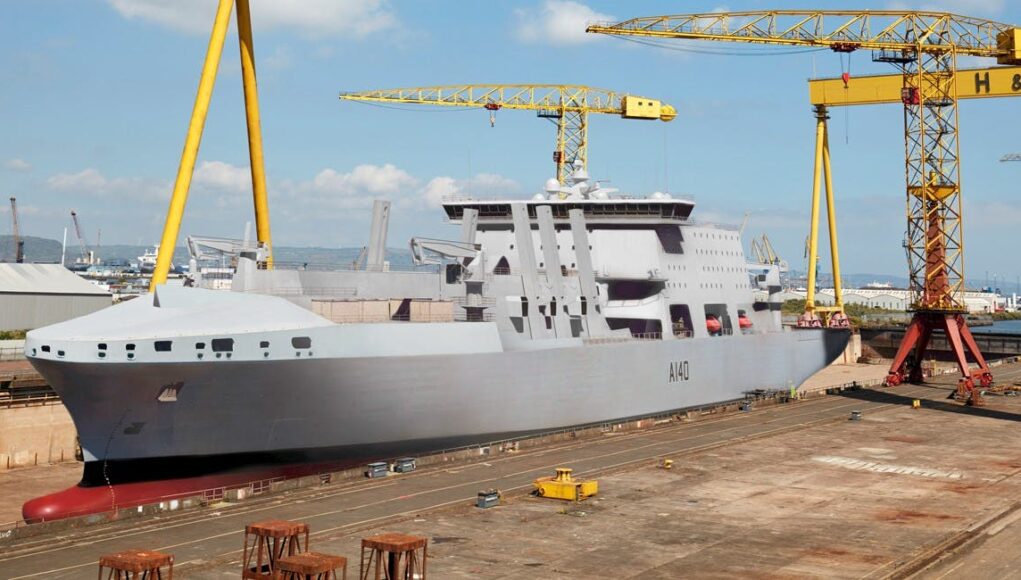
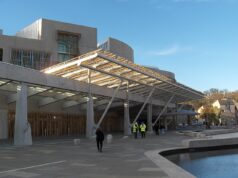
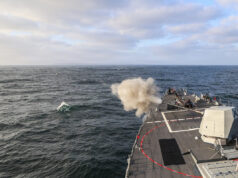
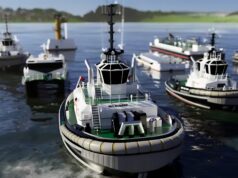
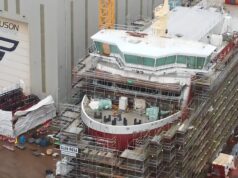
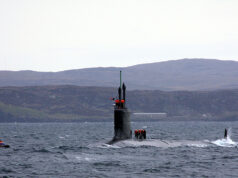
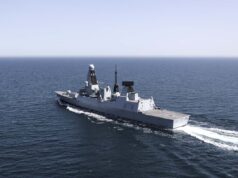

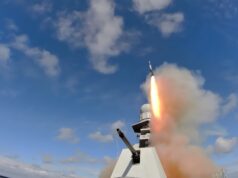
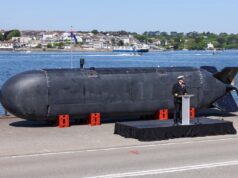
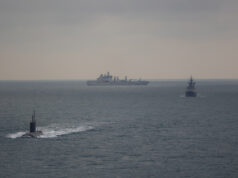

All success to you. I f we are to get the U K up and running again we need to invest in our own infrastructure and our own people. Any previous rules should be thrown out the window.
Also. good news for the T31’s. We have five. Another three…or five?
It sounds interesting, but surely we need a shipbuilding steategy that is based on a 10 year time scale (see my post on T31 engine thread) that includes CL, Babcock, BaE as well as H&W.? And funded separately and in addition to the current defence budget. If we really want a sustainable industry.
I’m initially positive about this; get one of the most efficient ship builders in Europe to provide the systems and procedures that make them competitive, the NI workforce is skilled and in place- just make it clear to them that they adapt to anything new or lose the job. With a bit of capital investment from these first RFA orders, and with some aggressive sales work, there could be a good future for H&W.
The NI workforce doesn’t exist, H&W have only a very small active workforce now and bring in contractors for significant chunks of work from across the island of Ireland and GB. Scaling H&W back up to being able to build something this size would be a major investment that will almost certainly impact time and costs for the hulls.
Ah, OK, I was referencing a STRN article which said they had a local workforce of 1200 that had been laid off in the last year when they changed ownership. Are they not loccal then?
https://www.savetheroyalnavy.org/british-spanish-team-bid-to-build-the-fleet-solid-support-ship/
Nah they don’t have anything like that as a local force, even before the ownership issue there model was mainly bringing in contractors in on a “as needed” basis. I know some who made quite a good living sourcing and renting housing for the workers.
Roughly I think they may have about a couple of hundred “locals” on site but I could be wrong, I’ll ask a few people I know.
Fair enough, I’ve never been a big fan of that model- seen it before in the offshore industry. Contractors making a stupid day rate staying in nice rental properties or hotels on the edge of places like Grimsby, while the locals get the rental income at best. Not knocking the landlords, it just doesn’t seem to benefit the locals that much.
While I don’t doubt you’re right about the cost of building up a new work force, I’d love to see it happen. It annoys me no end that successive governments have let British industry rot and the regions that relied on them with very little.
I know, I mean hell after the Cobh yard shut we now basically get H&W to send down workers for any intensive work on any ship in the Dockyard, they stay at a hotel near me.
As I said elsewhere though if H&W can remain viable it will be the only dock on the island of Ireland for the next Flagship of the Irish navy if that cursed project ever gets the green light.
Here’s hoping, then!
I’ve read that it could get service work on the QE carriers too, which will add some needed capacity for large ships- trying to get them in and out of Rosyth is difficult and time sensitive from my understanding. Then again, don’t know if it would be equally so at H&W…
If it is a common, proven hull it would be stupid to not capitalise on that and take advantage of costs saving by using it as a base for Albion replacement and Argus replacement too
This is something that I have argued for, Not only an Albion and Argus but the possible LSS ships, Bay class replacement and in the future the Point class sealift ships. Let also not forget the mention of hospital ships. Thats 15-20 ships that could all be based on the same hull concept each between 20-30,000 tons. This could become a UK version of the Dutch DAMEN designed support/amphib ships. A potential 25 years work and employment for 10-15,000 people involved in the construction and supply chain at a cost of about £350 million per year and a 40-50% return to the treasury.
I love the idea and I think it has legs, but I’m wary of trying to shoehorn too many platforms/requirements into one hull design.
FSS, LSS, aid/international support ships (NOT hospital ships, we don’t want one of those), absolutely. When it comes to replacing amphibious capability though, I’m hesitant; All of the previous require large square spaces (internal and open), cranes of one sort or another, and a decent sized flight deck. Amphibious vessels certainly need all of that, but they also really need well decks. That is a very specialised design, and may be the ship equivalent of the F-35B compromise (I’m not anti-F35, but it’s widely acknowledged that the B-model has compromised the performance of the other two. Would it have been worth making a stealth V/STOL strike fighter as a separate programme? I don’t know, but it’s worth noting). I’m just wary of the base design trying to allow for so many requirements for the eventual different sub-types that the cost skyrockets, and nothing gets built.
It would be great to see the iconic Harland and Wolff shipyard resurrected from it’s present demise. It would strengthen NI’s links to the Union and help re-establish British skills lost over the last decades. Even if there is a perceived price difference between bids from foreign and UK tenders, one has to look not only at apparent bottom lines but also Tax issues and the contribution and multiplier factors.
I think you are vastly overestimating what political impact H&W would have, and as I’ve said given how scaled down H&W is now, ramping back up to be able to build ships of this size would be a costly and lengthy process, not great if you want the hulls soon.
And of course you have to hope there’s no repeat of the Fort incident…
Hi Mark. Hear what you say but historically and symbolically H&W is a much loved icon in Belfast and even if it is never returned to its glory days, it would be significant to the people of Belfast on both sides of the divide. Incidentally, my Grandfather saw the Titanic launched from there and many of my family were either employed directly or indirectly in shipbuilding in NI. As a child coming into Belfast down the lough on the ferry from Liverpool, seeing the H&W Crane was akin to the Statue of Liberty for New Yorkers.
Ah, not really “both sides of the divide” given it’s long historical anti-Catholic position for most of it’s time, granted that has now passed but it is much more a Protestant/Unionist Icon than anything else. And you are absolutely right about it’s historic economic value to Belfast but again those days are passed and I can’t see how it could be regenerated to such a degree.
One major thing that’s passed over is where this workforce is going to come from, again historically you had people that worked for the yards for life as you say family businesses almost, nowadays that demographic would generally be the least economic active or educated in NI (working class male protestants are from memory the least educated/employed in recent census). Getting a workforce back to the level to build such ships will be a major effort in and of itself.
The work force will be largely contractors from Scotland, Spain and Northern England. H&W won’t keep all of their eggs in one basket so if they can get naval work great it will prob be managed by Nevantia in all hit name. While the locals focus on managing renewable energy projects.
I would like to see ship building kick off here again I do think the facilities exist without too much investment.
They already use that model for just what they were doing before the near collapse of the yard last year, not sure how much more it can scale, also bare in mind said historical workforce population may be “unhappy” if there is growth and more skilled non local workforce is used. And this being NI them being “unhappy” can have unfortunate side effects.
Not sure the Yard has seen much capital investment for some time tbh.
Agree with your take BB85. Are you based in Belfast?
Morning Mark. And I take your comments regarding historical injustices however as you say those days have passed/are passing. H@W may be more of a Prod icon but each side has their own. It is also a reality that shipbuilding skills in NI are now largely lost but can be rebuilt from a smaller base. I would think that if this bid is succesful, H@W will be very much the junior partner. Incidentally, my Grandfather built a chapel in the Falls Road in the 1920’s(he was born in the Shankhill)!! I was too young to understand the significance of that and ask him about it before he died. All the Best
This country has been in decline industrially for 70 years (and thats being optimistic on the figures) and we will have to take a long term view on any form of restoration based on a timescale not far short of that. No point saying it can’t be done in the next 5 so no point considering it at all, been far too much short terms here. We need to make a long term judgement, gain all the information possible on whether a 30 to 50 year gradual advance can be set in motion and is sustainable and invest only on that basis. Certainly the loss of skills has been so great that just as Spain and many Asian countries have done, there is a requirement to accept foreign businesses will take much of the lead in the short term. But as long as they allow significant transfer of skills and knowledge to attain eventually what we need to achieve (with acceptable modelled risk) that initial vision then that is something that we will have to accept bite the bullet and accept we are no longer an industrial powerhouse (just a highly skilled rump that itself needs to be nurtured too) and we need to be realistic in our ambitions. If not then there is little point in short term investments for mostly political motivation that turn into a money pit and no plan for future prosperity and competitiveness, as we saw far too much of in the 60s and 70s that may have won short term votes but nothing but damage in the long run.
A well articulated post but I disagree with much of what you say. It is a myth to talk about the average British worker having to compete with people who eat a bowl of rice and earn a dollar a day. All other things being equal(the Latin sounds a bit poncy) companies like Nissan have shown British workers can be as good and productive as any the world over. Also with the pace of change in every field now difficult to keep up with no one can work on 50 or 70 year cycles. A ten year period is more realistic. I understand the need to recover the big setup costs that are required to revive old industries but again, with proper planning and careful rather than unnecessarily small steps, should be the route to employ. there is no doubt that the UK is up there well in the top ten when it comes to inventiveness and innovation-the Nobel Prize list is the simple proof of the pudding, but there is no reason that this should preclude the return to manufacturing for many reasons. The Perfect Storm that destroyed much of British Industry notably in the 60’s and 70’s was not an inevitable end cast in stone. Germany and France among others retained their big manufacturing industries including some of the worlds largest carmakers not because they are inherently any better than the British.
And the price vs capability? Gold plated or with omissions?
What are the costs of comparable support ships in service elsewhere? Just to see if MoD are taken to the cleaners again.
We need things Brit built though, no doubt about that.
I wonder also if Spain will quieten over Gibraltar while this is going on.
Hi folks hope are all well.
Yes agree daniele, I was thinking the same, if there is any further fuss over Gib how will the Spanish government react, and with possible backing from the EU. Still on the face of it, sounds good!
Cheers
George
Agreed George, hopefully, we will see a new era of shipbuilding on the scale that Ron mentions above.
It’s time we started investing in team UK rather than relying on others for our “off the shelf” military equipment.
Even if that means partnerships on occasion!
This sounds a very promising consortium, let’s hope that Navantia’s more advanced manufacturing capability and knowhow translate into a competitive price that makes it viable to build in Belfast. Of course HMG must start to factor in the personal and corporation tax that would come into the Treasury from UK shipbuilding that would be lost if the ships are built in the Far East.
It is a sad comment on the run-down size of the RN that we are only planning 3 replenishment ships.
With the pathetically small number of escorts, the navy could put out 3 combat squadrons/task forces (in addition to the CASD squadron): the Carrier strike group and two small maritime task forces, the latter each with an SSN, T45 and two frigates. In addition there are guardships at various out-of-area bases.
Each of these would I imagine require a replenishment ship as a component part of the force? So we would need 4, plus one alongside as squadron reserve and one in deep maintemance/refit/war reserve, making 6 in total.
With just 3, they will be chugging to and fro, alone and vulnerable, trying to keep up with the task focus supply needs.
Is that my misunderstanding, are the MARS able to do a lot of the solid suppor replenishment or is it like the army brigades, we can deployster half of them at any one time, because we don’the have the CS or CSS to support more?
It will probably be worse. I expect just 2.
In 2010 we had 4 Replenishment ships, the two legacy Forts and the 2 newer Forts.
My understanding, and I may be wrong and happy to be corrected by RN types, is that the current ships and the future MARS vessels supply solid stores, ammunition, and so on.
On the army you are technically correct. 3 Division is deployable.
1 Division is not, just a collection of infantry battalions and RAC Regiments with not a single CS and CSS formation between them.
They had CS and CSS for 2 brigades worth until 2015 and A2020R.
It is in 1 Division, and no where else, where cuts should fall.
Gabriele just posted a (surprisingly short, for him) piece touching on this subject; suggesting that 1 Div and the reserves should be reviewed critically before anything else.
From my reading MARS covers the already delivered Tide-class tankers (fuel and water) and the under discussion FSS for dry/solid stores and munitions. So we’ll have 6-7 replenishment vessels for the fleet. It may be that, due to the difference in consumption between wet and dry stores that the difference in quatities adds up? It’s not like we have masses of munitions in warehouses to ship out to our fleets anyway! I’d still like to see equal numbers of each though.
Quick points to note about 1 div. Daniele, you knowledge is a bit out of date, 1 UK XX now consists of 4 infantry brigades, 8th Engineer X, 2 Med X (chiefly the field hospitals) and 104 log X.
While 1 XX isnt going to deploy as a division, the UKs mode if operation around the globe means it’s actually a useful formation for the army. Examples include deployment of its light cav formation to provide reconnaissance for US forces in Poland, or Op Telic and Shader inf Battalions that are regularly used on Toral and Shader. I could go on but you get the point.
Hi Dern
I was aware of all of the changes. I know, I spent hours updating my ORBAT files!!! They happened after 6 Division was formed from the ISTAR and Sig’s elements ( 11 and 1 Sig Bdes, 1 ISTAR bde, along with the SIG, and FTC was dismembered.
I could not be bothered to list them here, as the point remains ( that Gab constantly emphasises, and I agree ) that 1 Div for the most part still remains an un deployable formation with no CS or CSS of its own for its brigades – 4th / 7th / 11th / 51st, which contain the majority of the army’s Infantry.
It is a golf bag of parts really. Gab has also questioned whether 8 Force Engineer Brigade, 2 Medical, and 104 Logistic Support Brigade belong there, where before they sat quite logically in the FTC with the other components.
On Telic /Shader, of course, points taken. They are all useful for that, plus the Spearhead battalion, rotating as the garrison in Cyprus and in Brunei, public duties, and so forth.
I think the main issue, touched on by both Gabriele and myself, is that the army has cut so many CS and CSS elements it is now somewhat lopsided and disjointed. There are more infantry battalions than can ever be supported and used as an all arms brigade. ( I guess you could just ad hoc group them into 3 Div? )
Even the rapid reaction elements 16AA and 3 Cdo have lost supports.
As clearly an army man, what is your wider view on the ORBAT?
And I forgot to mention the “cap badge mafia” in that!
And taking those points you raise further – the transfer of 104, 8, 2 brigades to 1 Div. They make the Division look more acceptable on paper, but their roles support the wider army, not 1 UK Division.
104 LS Bde has the RLC movements specialists at S Cerney and 17 PMR plus reserve elements. A strategic unit with a strategic role, it does not really support 1 Div as its primary role. It properly belonged at the Corps level where it was before – Force Troops Command.
8 Force Engineer Brigade. Again is properly a Corps level formation, as it supports the wider army including 3 Div in distinct roles for which it is split into groups. It is not really a 1 Div asset, only administratively. It should have remained in FTC.
The Close support regiments of 25 Gp were moved back to 3 Division, and not before time. They should have always been where they were before – parts of the brigades of the 3rd that they are meant to support – and align to.
12 Gp has Force Support Elements, now reduced to just one regiment in each of the ground and air support roles ( previously there were 2 of each ) Again a strategic unit which properly supports the wider army and its expeditionary capability. Wiki interestingly has 21 and 32 RE as being part of it, which I find curious as it is these regiments that are forming the RE parts of the Strike Brigades. 3 Div, not 1st.
29 Gp, EOD and search specialists. They do of course support 1 Div as necessary but large elements will be elsewhere with 3 Div and home based as UK IED role ( 11 RLC )
170 ( IS ) specialists, many of them reservists.
2 Medical Brigade has the field hospitals yes, almost all reservist,, but as you say some odds and sods at Strensell like the Field Medical Equipment Depot,Hospital Support Medical Regiment, and Medical Evacuation Regiment, all nationally recruited reservist formations properly part of CVHQ RAMC and FTC.
My point is this reshuffle that placed all these extra formations with 1 Div make it look better on paper, and are purely cosmetic. They should have remained with FTC.
As for 6th Division, the jury is out for me whether it is an improvement or just a paper tiger exercise so people can say we have 3 divisions.
My issue wasn’t that you didn’t list them Daniele, it was that you claimed there wasn’t a “single CS or CSS formation between them” which is demonstrably false. (And before we go on I lost a lot of respect for Gabrielles work a few years ago and stopped reading him, so I have no idea what he claims).
Is 1 Div deployable as a division? No. And it probably never will be. But that doesn’t mean it’s useless. Most of the British Army’s current deployments do not work with support from the Army itself, instead support is provided by contracted civilian facilities (this goes for both Domestic and International deployments) so the lack of CS and CSS elements in 1 Div isn’t really as big a deal as people make out (yes it would be if we where in a high end warfare scenario but if we need to balance the army out between Operations other than War and the ability to fight a high end war, this seems a pretty good compromise).
They wouldn’t be grouped ad hoc into 3 Div. IMO you’d see Division sized deployments only in two circumstances: An expeditionary war like the Gulf Wars (in which case even during the cold war the Army really could only deploy one division so looking into how to add 1 Div into the mix is a bit moot) and a war on the Continent, in which case lets face it, civilian infrastructure will be being converted to military uses as fast as possible (in fact 1 Div might be disbanded to provide training cadres for new divisions in that nightmare scneario).
16AA and 3Cdo, I’m a bit apathetic about. The navy is clearly not intrested in having 3Cdo be another light infantry brigade so the Army should recoup it’s CSS from there and reinforce elsewhere. 16AA’s reputation is massively exagerated IMO, a good light infantry battalion that’s gotten caught up in it’s own mythos and has limited utility. In an ideal world I’d use the CSS from 3Cmdo to upgrade 16AA’s, but in my mind there’s very little 16AA can’t do that any light infantry brigade from 1Div couldn’t do.
As you say the formations moved into 1 Div support the wider army not 1 Div, but that really works with what the division does anyway. Everyone gets hung up on the idea that because it’s a “Division” it needs to be deployable, instead of seeing what it is: a Pool of Manpower that doesn’t operate as a whole instead being used for tasks the Army needs to complete without pulling appart 3 Div, or committing 16AA. (Again I’m not necessarily arguing that CS CSS forces do support 1 Div, I take issue with your assertion that there are NO CS or CSS forces in the Division).
With the creation of 6 Div saying “these forces should remain in FTC” isn’t really an option. Keeping FTC would have meant a fourth 2 Star Command in an Army that really can’t afford more unecessary 2 Star Commands. Turning 1 Div into the “Strategic Reseve” in this context makes sense. Is there too much infantry for purpose in 1 Div? I don’t know, it’s been years since I’ve been in there and I don’t know how busy it is, but my gut’s saying the Battalions there are busy enough to warrant not cutting them.
I’m afraid I can’t share my thoughts on 6 Div. and what they do.
But to sum up my general thoughts on the Orbat:
1 Take CS and CSS away from the Marines and let the Navy do their thing, give it either to 16AA or if there is enough and tasks can spare them give them to one of the light brigades in 1 Div and make them a more useful high readyness formation.
2 Otherwise maintain a structure that keeps 3 Div as complete as possible, 1 Div a Strategic Pool for things like Shader, Toral, Cyprus, other low tier Battalion minus deployments, and supporting the wider army,
Hi Dern.
Just found this. Will read in depth and have an absorb before replying. Cheers.
Read in depth. Thank you. Accept your points on my critique. Your take on things makes me re evaluate my thoughts on 1 Division.
Well put.
You don’t need to expand but I’m of course curious as to why you no longer respect Gabriele.
I agree that 3 Div must be maintained.
I’m torn by the RM myself, but if the RN are not interested in a brigade formation then as we see in the recent changes to a raiding posture the Brigades diminishing will continue.
Likewise the Paras. I think the mythos is important myself, especially for recruitment and also that so many go on to SF.
If I had my way both would be maintained, even expanded. Being an island, expeditionary forces from sea and air are important, which is why I always support a RN, RAF and SF first posture.
A pleasure reading a piece like that from someone with both knowledge and the experience to comment.
Thank you for the interesting conversations.
I’ll be hoenst v Gabi, I don’t remember exactly what it was, I went off him a few years ago and until you mentioned him I’d forgotten he exists. I do remember stumbling on his blog around Brexit time and yeah…. less said about the impression that made the better.
I’m also skeptical of the RM downsizing to a Raiding force, but people keep saying we have a glut of infantry and I can see why the Navy would be more interested in not simply having a 5,000 man brigade they constantly loan to the army.
With the Paras, I just don’t really see anything they do better than most other infantry regiments except TAB (Parachute jumps are almost non existant and Air Assault can be done by virtually any Light Infantry force, the proof of that as a Para Officer once told me is “In the Helmand Pudding.”
On the other hand they have a much more limited scope than most other units. They’re culture of extreme aggression might do well in Parachute drops, but means that they are more of a liability in COIN operations and other low end deployments than the rest of the Army (and in truly high end warfare they suffer from a mobility and firepower deficit like most light infantry).
As for an SF breeding ground… yeah okay Paras do attract a fair number of individuals who go on to SF, however I suspect that those individuals would still make their way to SF through normal infantry Battalions if the Paras didn’t exist.
While I agree that expeditionary forces are important, but I don’t see “expeditionary” as “not including the regular army.” Especially when we recontextualize the MoD’s operations as not just including the nightmare high end scenario.
Nor do I. My point was prioritising the RN and RAF as the means to get them there, and support them ( army ) once they’re there.
Which to me means the SHF above all, then transports, tankers ISTAR on the air side, and carrier air power / RFA on the RN side.
Air Support through jets or RPAS obviously.
UKSF and intelligence agencies / and wider MoD ISTAR assets the building blocks which the others build on.
Cheers.
Hi Danielle, sorry if this is a bit under explained, but I’ll try my best!
Solid Support Ships are generally intended to support RN operations by supplying exactly what you describe: food, ammunition, and spare parts. I say generally, as Fort Vic does have a limited tanker capacity -even more limited now after her refit- which gives her a little more flexibility. The older Forts, both of which are laid up, don’t have this facility. Similarly, Fort Vic is the only one able to operate with the carriers and therefore fully contribute to the carrier group.
At this juncture, it should be noted that the tankers (Wave and Tide classes) do have the ability to provide items such as lubrication oils and other solid stores via their heavy jackstay rig or Vertrep. Those of you who watched the second series BBC about HMS QE would have seen this in action. Part of this provision is accommodated through containers placed on deck, with the Tides able to carry 8 TEU shipping containers.
It’s also key to note that both the Tides and proposed SSS are designed around the carrier group – something which is particularly notable when you study the RAS points on all ships and innovations such as the twin refuelling probe on the Tides. With the older Forts not currently being utilised, not able to support QE or POW and the existing tankers only able to offer a limited amount of solid stores, the new ships are needed – and quickly. This proposal has numerous commonalities with the Tide-class vessels, which will be a massive plus-point for commonality in the fleet.
The newer ships will an improvement, but again, you can question the numbers. Thankfully, improvements in efficiency, refrigeration and enhanced storage capacity as enabled warships to stay at sea longer without the need to refuel or resupply. Similarly, forward deployed vessels enjoy support from allied vessels or regular port visits, both enabling them to replenish their stocks. This is partly why we’ve seen numbers decline in recent years. I’d still like to see three procured as per the original plans.
@ Daniele, may I offer my apologies for the extra l in your name; I was in a rush!
Thank you for the detailed explanation mate. I know you know about the L, I would not have commented on it anyway
You’re welcome – hope you’re keeping well mate.
We are. Thank you.
Whilst it sounds promising it may be nothing more than dressing up a Spanish build. H&W would need a large investment to ramp up to build these ships. I believe H&W has less than 100 employees Cammell Liard has 700 and just completed a full build.
Danielle, the point about the army combat brigades is that we have 6, if we include 3 Cdo. The Government’s aim, as per 2015 SDSR, is to be able to deploy a full division i.e. 3 brigades.Basically, we can only man and support half of the formations that exist on paper.
I was wondering if this gap between paper and real also applied to RN task forces, which would be one explanation for the small number of fleet solid support ships.
1 Division in its penultimate form was an adminustrative ‘Division’ only, it included the ceremonial troops, Northern Ireland garrison, district troops and those serving out-of-area, it would never have taken to the field. And all recognise that the voluntary reserve units would need some months training before ever taking the field.
It must have looked good on paper to the politicians, pretending to themselves and no doubt our allies that we had twice the combat force we actually have!
I don’the know why they keep playing naming games with the CO and CSS units, they were called something else before Force Troops Establishment, now they are 1 Division – they were, are and will remain bleedin’ Corps troops, why not call them that?
It was called Theatre Troops. Then Force Troops.
Some are now in 1 Div. Some in 3 Div. Some in 6 Div.
Agree, I make that point above. They are corps troops assigned to brigades below, as it should be, and was. In BAOR most were at both Divisional and Corps level.
More: https://www.defensenews.com/global/europe/2020/05/28/british-spanish-naval-team-gunning-for-another-go-at-revamped-uk-carrier-support-program
Cheers
I know there was ‘talk’ of putting the FSSS back out to tender, has it happened yet or is this just H&W (and Co) putting it out there that they’re interested.
As others have said, if Navantia are involved, there is the potential to have a common hull form which could be something to consider but only if the government are planning on utilising this fully. If we’re only going to be looking at three (or two….) then we might be better looking at somewhere else, preferably in the UK. This ‘fudging’ to try and get cheap RFA’s from South Korea (or Spain) just doesn’t sit well, I know I’m singing to the choir but its all just such short term thinking.
Why is it Spain and Italy with Navantia and Fincantieri respectively have been able to build large, successful and sustainable ship building industries yet we struggle, despite the fact we build more combat ships than the aforementioned nations?
Are our companies just inferior? are they too fragmented? is our management poor? do we lack vision? How is it they the Italians can build mega-yachts and cruise ships in their docks but the refrain here is … that kind of work goes to cheap labour in Korea (which isn’t so cheap anymore).
It seems painfully obvious to me that modern European nations don’t need hundreds of combat ships anymore so between the inevitable downturns between military schemes the businesses need to look for commercial works elsewhere. I just don’t get it.
This wont benifit the UK what so ever. Why, most of the contract will have all steel bought and frabricated in Spain, our dearest friend. The graphic there shows a ship in Harland and Wolff building dock, so what!? BAE was developing an industry 4.0 digital shipyard for the Type 26’s before Navantia and is building a shipyard in Australia based on this and also helping Canada with their Type 26 ships using this tech.
We are now living in a China-19 virus World and now finding out how it is like to be too dependant on foreign supplies which we usually have a deficit with. Now more so than ever does UK industry need to thrive with these three ships to build wholly in the UK using UK material from all UK steel works and other suppliers. This present UK government was voted in for various reasons, and one I beleive was for ambition in building British! The electorate will know this. Never has this been so relevant.
Harland and Wolff does not need to be set aside By UK FSSS consortia because the firm that owns them now has sided with a Spanish firm, nor does BMT if their design is liked more. Is it fair that foriegn firms divide and conquer and we become bit part players in our own play?
This Country needs to stop being a shy baby and feel like shew is upsetting others. Value for the UK taxpayer mean building and sourcing all material from UK industry, starting with Liberty Steel British Steel and Tata for plate section, pipe and wire etc. then all non main material as much as possible, but purchaased friom the UK gov as they get the tax back…
Make any sense?
By the way. The Dutch FSSS version is being built in the Netherlands and they revoked the eu article too. We should not and have never been subjected to any eu article that undermine the UK and her industry that has helped lead to our needless decline and certainly not now as we have left this eu empire.
This is a test and possible end to a new, post covid, viable industry we are good at.
I hope that my computer that is on open processor chip surgery can stay alive to post this..
The whole idea is completely insane and a easy divide and conquer tactic which the UK Gov and MoD have allowed to happen with this daft competition idea as if it were like a game show. It in affect, allows UK shipyards to be neutralised in this process.
This would not really be a partnership, but a convenient set up to allow Navantia to build these UK taxpayer funded ships and assemble a little bit of it in the UK. This is a Spanish and minor UK subservient partner so as to give Spain the win, a Country along with her people who do not like us for starters and we already have a big trade deficit with too. Navantia is state owned. Make no mistake the UK will be the bit part player yet again in what is a pivotal time for the future of UK shipbuilding. I doubt if much will benefit H&W and they will fair just as well when invited to the UK camp. But as one commentator said, which is important, is the legal picture, but most things can be circumnavigated legally anyhow. Nothing is set in stone. We have to stop[ this being out maundered by foreign rivals who are out to get our business at our cost.
All steel and steel work will come from Spain and also the modules, only to be assembled in Harland & Wolff. This team may as well be called Team Rule Britannia. It means nothing.
There is no reason why the MoD cannot use some intelligence for once and look at BMT design with the UK build only, which it must be. There is also no reason why Harland and Wolff cannot be part of Team UK FSSS, it is the UK (with the ambition and wishes of the UK public) who call the shots. If BMT design wins, why would you then favour a more expensive foreign build, which is what this would be.
Harland and Wolff can be involved with the UK team, or will some say there wont be enough for UK shipyards, which makes the lack of UK capacity argument a poor excuse along with all the other excuses. Harland & Wolff could do better when with Team UK. But as they are, they are much the same as Rosyth as a final assembly shipyard facility with a little more in plate and section production. Harland’s needs modern steel working facilities and production lines etc. Originally the Carrier build was said to have contracts spread around to give many UK facilities a slice and nothing about lack of UK capacity. Other final assembly like Swan Hunters Wallsend facility wanted, with blocks mainly coming from their Port Clarence facility (now Wilton Marine).
On Navantia’s shipyard 4.0 system. BAE had and have a similar concept years ago and are building some shipyards around the world based on it.
Australia no longer and may be Norwegian and Turkish yards are not capable in terms of facilities and skills to build ships like these, but the UK is!
The UK supply chain for these ships can be far higher than the designated protected and so- called sovereign by government, frigates and subs. Team FSSS can be a real mainly UK based supplier enterprise that benefits the UK taxpayer.
Navantia have done a fair bit, but have not built huge complex super carriers that have been hampered so many times by UK politicians and officials adding their bit (officials are not just people in uniforms).
There are not many UK naval projects on the horizon, which is why during this foreign created downturn pandemic, UK shipyards must carry on and hopefully rivals fall ( I know this sounds unfair, but they wish it on us so don’t be shy about this fact) so we can survive as well as capitalize on this.
It’s always this capacity idea that works against us. One minute we don’t have capacity (never the case in reality) then next over capacity, so what is it to be.
Dutch JSSS, German support ships, Italian, French etc have all gotten on with their ships without all this farce we in the UK face which help to undermine our own industry. All are more expensive than if we built them too! But these Countries see the bigger picture and socio economic impacts along with tax claw back which this Country needs to get to grips with and no be lazy about because it is costing g us.
In order for Industry to invest, it needs too know it has the confidence of it’s own government. The actual Government National shipbuilding strategy came from the MoD and was really a international warship building strategy and did not take important bits in from the original Sir John Parker report and his review after the official Gov strategy in which he spoke again about the FSSS and commercial shipbuilding, he also mentions about long term investment in facilities and people as a condition of getting these contracts and how the MoD is lacking in areas.
Recently, we are having a report not disclosed to the public from the investigation that the then Defence Secretary Penny Mordaunt ordered regarding the tide ships built in South Korea. There is something certain official in the MoD and UK Gov do not like. It needs to be disclosed.
Due to the virus, the UK economy contracted by over twenty percent in the last month and OECD say the UK economy will be worst hit of all in the developed Countries. One reason given is due to our lack of manufacturing industry and over reliance on imports and too big service sector etc. We were caught out with our trousers around our ankles with the 2007/08 financial meltdown that was inevitable and we have been caught out again, so when is the penny going to drop? Our economic model is all wrong and we still have not learnt anything. But the problem is that UK manufacturing has faced critics who cite lower wage economies and we cannot compete etc. This anti manufacturing climate has been around for along time and did not change in 1997, in fact it got worse with Labour governments not wanting this Country to make anything. But we have been found out and always when we need our manufacturing we lose out due to mothballing or eu rules energy costs, it is always something that wrong foots us. Building the new Forth bridge mostly with Spanish and Chinese made material while Dalzell Cumbuslang and Appleby was ignored and later mothballed due to dumping etc. We need our strategic industries to flourish and they need the fair conditions to flourish.
If we are not going to fund the military properly, we may as well not bother at all and we will be exploited by other Countries who are not real friends. If we go for face price, we will end up paying more in the reality. Jus like PFI contracts, delaying projects and quangos with no purpose etc.
To give any part of this UK taxpayer contract abroad would be total industrial suicide. All comments here all make valid points, but no one is looking at a real long term structure for future UK shipbuilding and how facilities can evolve. This means five, ten, twenty, forty years outlook instead of saying, it’s just a hole in the ground type of mentality we have at the moment. I sure Navantiia along with our other rivals take a long term approach with a view to new ship types in the future too. Shipbuilding will change and just like this virus, it will end, but we need to have firms and facilities to capitalise on this like other do. Looking for the now or next few years is short termism. Navantia also have (along with other foreign rivals) their teeth into our offshore renewable sector too and this is something to be ashamed of too.
I’ve no doubt a scheming UK government will try the value for the taxpayer excuse as one get out, or set a daft time schedule so as to undermine our builders even though as stated here, time of concept phase has been over two decades long. Totally ridiculous and how does industry gear up for this lack of direction? Also they will say that to have three ships we had to go with Spain or have only two if from the UK. If Spain can build these ships at fifty percent lower than the UK and after tax claw back from UK firms is taken into account (net cost), I would ask, who is subsidizing Navantia? Lack of capacity, we don’t build ships like these and the good old industry destroying eu rules that only we abide by will be used. We will have all the classics come out if they (MoD and UK government and certain vested interests) decide to ruin a new UK shipbuild sector potential.
Due to the virus, the UK economy contracted by over twenty percent in the last month and OECD say the UK economy will be worst hit of all in the developed Countries. One reason given is due to our lack of manufacturing industry and over reliance on imports and too big service sector. has been decades long.
Just as a foot note. RFA Fort George was built for around 132 million quid which is around 330 million pounds today and also GROSS (Harland and Wolff‘s build of Fort Victoria was not a true reflection and had many problems which should not reflect on Harland‘s today). A 32,000 ton Wave class ship would cost around 185 million pounds GROSS in today’s prices. That is with facilities less efficient than today etc. Spain’s Navantia built Cantabria at 20,000 tons in today prices in pounds would cost 242 million pounds. If the pound had been lower back during her built this price would be higher. The new JSSS HNLMS Den Helder is 334 million pounds and the Dutch revoked a certain eu regulation because of sovereign capability and intellectual property.
I hope that my computer that is on open processor chip surgery can stay alive to post this..
The whole idea is completely insane and a easy divide and conquer tactic which the UK Gov and MoD have allowed to happen with this daft competition idea as if it were like a game show. It in affect, allows UK shipyards to be neutralised in this process.
This would not really be a partnership, but a convenient set up to allow Navantia to build these UK taxpayer funded ships and assemble a little bit of it in the UK. This is a Spanish and minor UK subservient partner so as to give Spain the win, a Country along with her people who do not like us for starters and we already have a big trade deficit with too. Navantia is state owned. Make no mistake the UK will be the bit part player yet again in what is a pivotal time for the future of UK shipbuilding. I doubt if much will benefit H&W and they will fair just as well when invited to the UK camp. But as one commentator said, which is important, is the legal picture, but most things can be circumnavigated legally anyhow. Nothing is set in stone. We have to stop[ this being out maundered by foreign rivals who are out to get our business at our cost.
All steel and steel work will come from Spain and also the modules, only to be assembled in Harland & Wolff. This team may as well be called Team Rule Britannia. It means nothing.
There is no reason why the MoD cannot use some intelligence for once and look at BMT design with the UK build only, which it must be. There is also no reason why Harland and Wolff cannot be part of Team UK FSSS, it is the UK (with the ambition and wishes of the UK public) who call the shots. If BMT design wins, why would you then favour a more expensive foreign build, which is what this would be.
Harland and Wolff can be involved with the UK team, or will some say there wont be enough for UK shipyards, which makes the lack of UK capacity argument a poor excuse along with all the other excuses. Harland & Wolff could do better when with Team UK. But as they are, they are much the same as Rosyth as a final assembly shipyard facility with a little more in plate and section production. Harland’s needs modern steel working facilities and production lines etc. Originally the Carrier build was said to have contracts spread around to give many UK facilities a slice and nothing about lack of UK capacity. Other final assembly like Swan Hunters Wallsend facility wanted, with blocks mainly coming from their Port Clarence facility (now Wilton Marine).
On Navantia’s shipyard 4.0 system. BAE had and have a similar concept years ago and are building some shipyards around the world based on it.
Australia no longer and may be Norwegian and Turkish yards are not capable in terms of facilities and skills to build ships like these, but the UK is!
The UK supply chain for these ships can be far higher than the designated protected and so- called sovereign by government, frigates and subs. Team FSSS can be a real mainly UK based supplier enterprise that benefits the UK taxpayer.
Navantia have done a fair bit, but have not built huge complex super carriers that have been hampered so many times by UK politicians and officials adding their bit (officials are not just people in uniforms).
There are not many UK naval projects on the horizon, which is why during this foreign created downturn pandemic, UK shipyards must carry on and hopefully rivals fall ( I know this sounds unfair, but they wish it on us so don’t be shy about this fact) so we can survive as well as capitalize on this.
It’s always this capacity idea that works against us. One minute we don’t have capacity (never the case in reality) then next over capacity, so what is it to be.
Dutch JSSS, German support ships, Italian, French etc have all gotten on with their ships without all this farce we in the UK face which help to undermine our own industry. All are more expensive than if we built them too! But these Countries see the bigger picture and socio economic impacts along with tax claw back which this Country needs to get to grips with and no be lazy about because it is costing g us.
In order for Industry to invest, it needs too know it has the confidence of it’s own government. The actual Government National shipbuilding strategy came from the MoD and was really a international warship building strategy and did not take important bits in from the original Sir John Parker report and his review after the official Gov strategy in which he spoke again about the FSSS and commercial shipbuilding, he also mentions about long term investment in facilities and people as a condition of getting these contracts and how the MoD is lacking in areas.
Recently, we are having a report not disclosed to the public from the investigation that the then Defence Secretary Penny Mordaunt ordered regarding the tide ships built in South Korea. There is something certain official in the MoD and UK Gov do not like. It needs to be disclosed.
Due to the virus, the UK economy contracted by over twenty percent in the last month and OECD say the UK economy will be worst hit of all in the developed Countries. One reason given is due to our lack of manufacturing industry and over reliance on imports and too big service sector etc. We were caught out with our trousers around our ankles with the 2007/08 financial meltdown that was inevitable and we have been caught out again, so when is the penny going to drop? Our economic model is all wrong and we still have not learnt anything. But the problem is that UK manufacturing has faced critics who cite lower wage economies and we cannot compete etc. This anti manufacturing climate has been around for along time and did not change in 1997, in fact it got worse with Labour governments not wanting this Country to make anything. But we have been found out and always when we need our manufacturing we lose out due to mothballing or eu rules energy costs, it is always something that wrong foots us. Building the new Forth bridge mostly with Spanish and Chinese made material while Dalzell Cumbuslang and Appleby was ignored and later mothballed due to dumping etc. We need our strategic industries to flourish and they need the fair conditions to flourish.
If we are not going to fund the military properly, we may as well not bother at all and we will be exploited by other Countries who are not real friends. If we go for face price, we will end up paying more in the reality. Jus like PFI contracts, delaying projects and quangos with no purpose etc.
To give any part of this UK taxpayer contract abroad would be total industrial suicide. All comments here all make valid points, but no one is looking at a real long term structure for future UK shipbuilding and how facilities can evolve. This means five, ten, twenty, forty years outlook instead of saying, it’s just a hole in the ground type of mentality we have at the moment. I sure Navantiia along with our other rivals take a long term approach with a view to new ship types in the future too. Shipbuilding will change and just like this virus, it will end, but we need to have firms and facilities to capitalise on this like other do. Looking for the now or next few years is short termism. Navantia also have (along with other foreign rivals) their teeth into our offshore renewable sector too and this is something to be ashamed of too.
I’ve no doubt a scheming UK government will try the value for the taxpayer excuse as one get out, or set a daft time schedule so as to undermine our builders even though as stated here, time of concept phase has been over two decades long. Totally ridiculous and how does industry gear up for this lack of direction? Also they will say that to have three ships we had to go with Spain or have only two if from the UK. If Spain can build these ships at fifty percent lower than the UK and after tax claw back from UK firms is taken into account (net cost), I would ask, who is subsidizing Navantia? Lack of capacity, we don’t build ships like these and the good old industry destroying eu rules that only we abide by will be used. We will have all the classics come out if they (MoD and UK government and certain vested interests) decide to ruin a new UK shipbuild sector potential.
Due to the virus, the UK economy contracted by over twenty percent in the last month and OECD say the UK economy will be worst hit of all in the developed Countries. One reason given is due to our lack of manufacturing industry and over reliance on imports and too big service sector. has been decades long.
Just as a foot note. RFA Fort George was built for around 132 million quid which is around 330 million pounds today and also GROSS (Harland and Wolff‘s build of Fort Victoria was not a true reflection and had many problems which should not reflect on Harland‘s today). A 32,000 ton Wave class ship would cost around 185 million pounds GROSS in today’s prices. That is with facilities less efficient than today etc. Spain’s Navantia built Cantabria at 20,000 tons in today prices in pounds would cost 242 million pounds. If the pound had been lower back during her built this price would be higher. The new JSSS HNLMS Den Helder is 334 million pounds and the Dutch revoked a certain eu regulation because of sovereign capability and intellectual property.